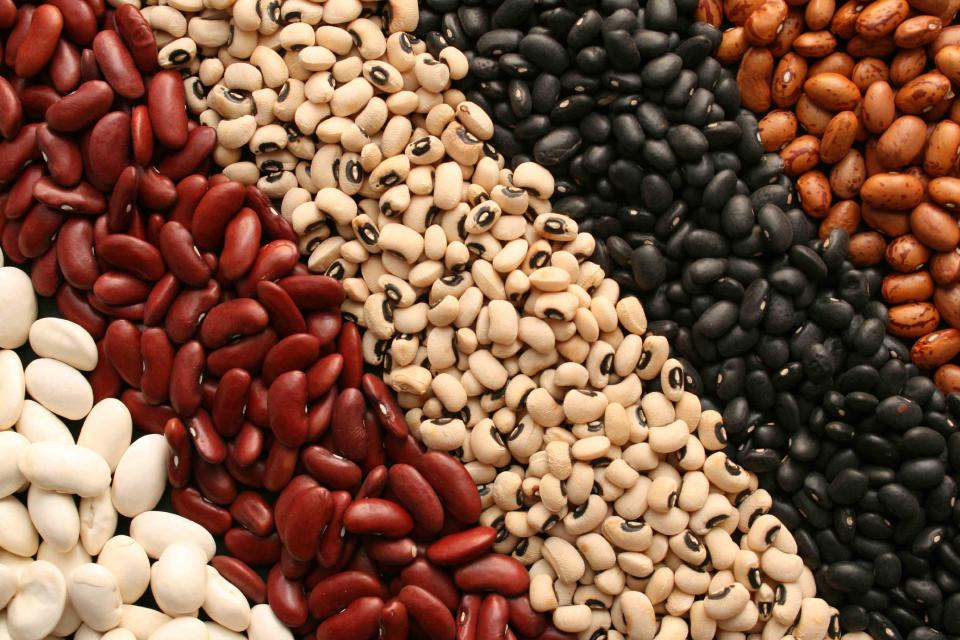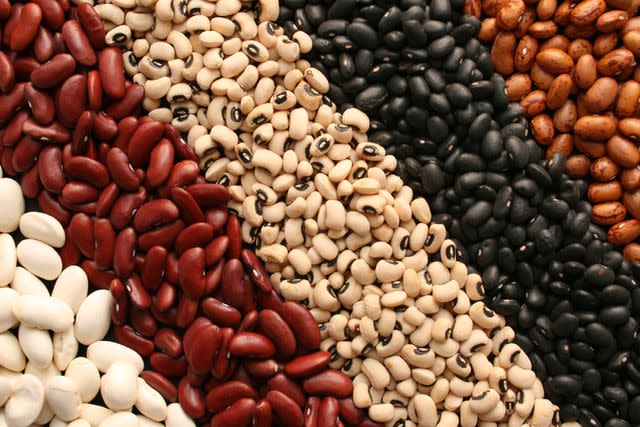Julia Child’s Guide to Cooking Beans
Cook dried beans to perfection with these tips from a legend.

Fotografia Basica / Getty Images
There's nothing difficult about bean cookery since it is only a question of time. Before cooking, all dried beans need to be rehydrated by soaking. The 10- to 12-hour overnight soak is the easy and always effective method, but you can quick-soak beans by bringing them to the boil for one minute, then covering the pan and letting them sit for one hour.
After their soak, you can quickly cook them in a pressure cooker. Or you can simmer the beans in an open pot, or cook them in the microwave oven. All these methods produce a respectable and perfectly edible bean, but if you want the divine and unforgettable bean, try the overnight soak and slow-cook method.

Fotografia Basica / Getty Images
The leisurely overnight soak followed by long, low simmer produces, to my mind, a bean as tender, meaty, and as thoroughly pleasurable as a bean can be. An electric slow cooker is ideal because it needs no watching, but a well-tended and roomy saucepan or casserole will also do.
The overnight soak
In the evening, measure your beans into a sieve. Pick them over to remove broken or discolored bean or little stones. Then toss the beans under cold water to wash off any dust or dirt. Turn them into the slow cooker or into a saucepan or casserole and pour in cold water. Cover loosely and let sit at room temperature until you get up in the morning.
Related: 7 Terrific Bean Recipes
When have they soaked enough? Bite into one; it should have a crisp raw texture, but no hard core. The Slow Cook: Set an electric slow-cooker to high, turn the heat under a saucepan to moderately low, or set a casserole in a 225°F oven. The beans should take a good half-hour to almost simmer and should remain so throughout their cooking. lf the liquid sinks below the surface of the beans, add driblets of boiling water; the beans should be just submerged at all times. After an hour, stir in 1 tablespoon salt. For all-purpose beans, my only other additions are bay leaves and good olive oil. Other additions could be salt pork cut into matchsticks and blanched, rinsed and drained; several whole unpeeled cloves of garlic; two or three small whole peeled onions; an herb bouquet (two imported bay leaves, half a teaspoon of thyme leaves and six parsley sprigs all tied into a folded celery stalk with its leaves). Start tasting after about two and a half hours, just in case. Total timing varies between three and four hours; I imagine this has to do with the freshness of the beans. The most recent crops cook faster.
For more Food & Wine news, make sure to sign up for our newsletter!
Read the original article on Food & Wine.

